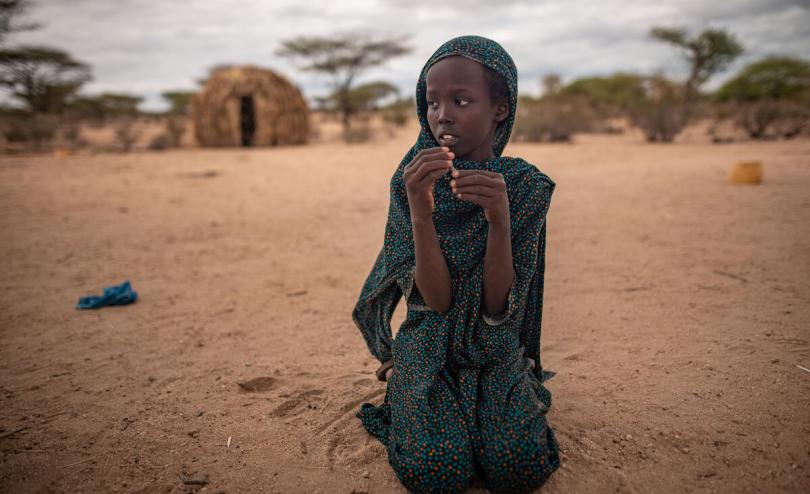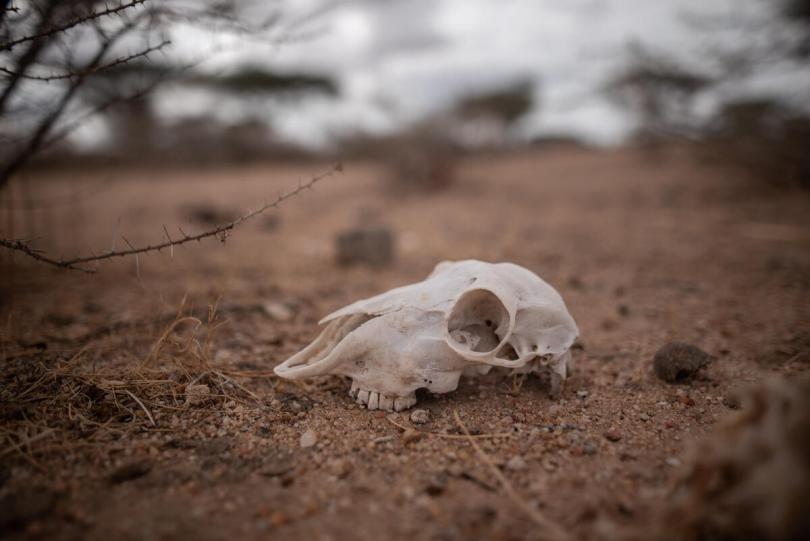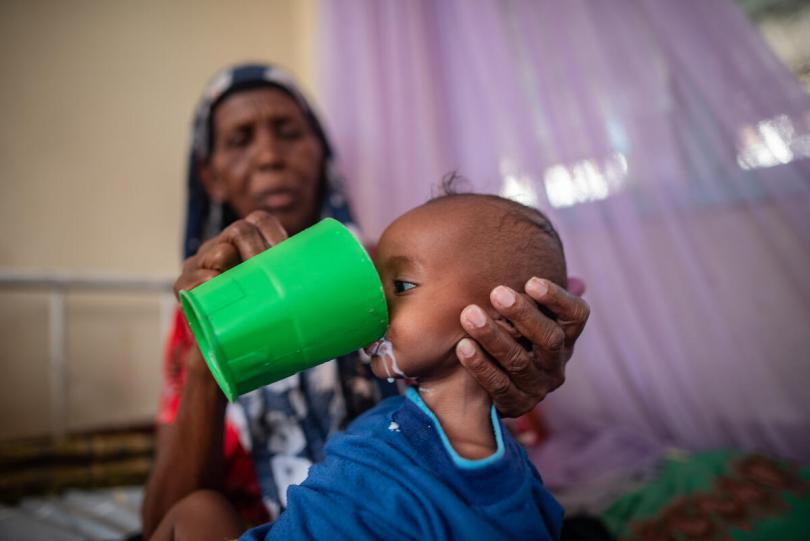“I pray we get rain by the mercy of God.” - Crisis in Kenya: Children on the brink of catastrophe

IMAGES : www.contenthubsavethechildren.org/Package/2O4C2S8VBXML
Friday 5 August 2022 – A severe drought crippling northeastern Kenya has driven the number of children facing acute malnutrition up by 25% so far this year to nearly one million with fears this will rise further if forecasts for another failed rainy season prove to be accurate, leading to an unprecedented catastrophe.
Save the Children is releasing a series of powerful images by award-winning photographer Tommy Trenchard from the epicenter of the drought to illustrate the devastating impact of the crisis on children’s lives.
The photographs capture their struggle to survive, living in one of the harshest environments on earth. Families are forced to dig for fresh water in dried riverbeds, children describe not knowing where their next meal will come from or if they can afford to go to school, and mothers nurse their sick malnourished children as they cry through the night.
The Horn of Africa is facing its worst drought in 40 years after four consecutive failed rains with the crisis compounded by rising food prices due to the war in Ukraine and the fall out of the COVID-19 pandemic. At least 18.6 million people across Ethiopia, Kenya and Somalia are living with acute food insecurity and rising malnutrition and this number could rise to 20 million by September. This includes more than 7 million children suffering from acute malnutrition with two million facing the most dangerous form - severe acute malnutrition.

More than two million children live in the arid and semi-arid regions of northern and eastern Kenya. An estimated 942,000 children aged under-5 and 135,000 pregnant women and breastfeeding mothers are acutely malnourished and in need of treatment, up from 755,000 and 103,000 respectively since February this year.
Over 1.5 million cattle, that are vital for pastoralist communities to feed and support their families, have been wiped out by the drought in Kenya. As a result, children have little milk to keep them nourished and what animals have survived are too thin to sell for families to earn an income.
Millions have been plunged into poverty and families cannot afford to feed their children or send them to school. About 3.3 million children are at risk of dropping out of school in Kenya, Ethiopia and Somalia. This has tripled in just three months.
Mahad*, 12, lives in a village in the north of Garissa County close to the border of Somalia with her mother and seven siblings. Her family lost hundreds of animals to the drought, and now are struggling to afford food and the fees to keep her in school. Their village has not seen rain for several years, and families are forced to dig into a dry riverbed in search of water.
Her father Hussein*, 45, said: “ We're still alive. We have not died yet. But only God knows what will happen if there is another failed rainy season. We used to eat three meals a day, now we only eat two. Sometimes we go without food.
“The school needs fees. Right now, we cannot afford it.... If I cannot pay the school fees they will have to just come and stay at home.”
Mahad*, said: “When I grow up, I want to be a teacher. I want to stay in school.”

Dualle*, 14, said since the cattle died his family has had nothing to eat. He and his four siblings go for days without food, and rely on their neighbours for support. Dualle* said young children are particularly impacted by the lack of milk from the animals and are susceptible to illness because they are so malnourished.
He said: “The cattle are dying and so people have nothing to eat. Some nights we don’t cook supper, then children stay hungry and the following day we ask for help from our neighbours who are better off. It's continuous, you can find you only cook food for three days and the remaining days you miss food.
“The young children cry a lot because they do not have anywhere to get milk... at times they sleep hungry. They can get any illness because they are malnourished and have no strength.
“My mother goes to the villagers and asks for help, that’s how my sister goes to school, and my mother must pay them back. At times she stays at home for months, because my mother cannot afford her school fees.”
When asked about the future for children, Dualle* said, “I pray we get rain by the mercy of God.”
Yvonne Arunga, Save the Children Country Director in Kenya said:
“These powerful photographs illustrate the disaster unfolding before our eyes. No child should go to bed hungry, be unable to afford to go to school or struggle to access clean water. Rising prices due to the war in Ukraine, climate change and the economic impact of COVID-19 have combined to create a hunger crisis on an unprecedented scale, putting the lives of millions of children at risk. With rains forecast to fail once again, time is running out for these children. The world must act now to prevent catastrophe.”
Save the Children and local partners are responding to the drought crisis in Northern Kenya and have so far reached 381,232 people including 204,691 children. We are providing cash assistance to affected households to enable them to buy food and non-food items such as water, we are also implementing nutrition interventions to ensure children under five years and pregnant and lactating mothers have access to screening and treatment for malnutrition and other childhood illnesses. In addition, Save the Children is providing water to households facing acute water shortages through water trucking and rehabilitation and solarization of boreholes as well as provision of livestock feeds and vaccination services to livestock in high-risk areas.
ENDS
Save the Children has been providing support to children in Kenya through our development and humanitarian programmes since 1950. We work with communities, local partners, and the government to design and deliver programmes to meet the needs of the most deprived children. We also advocate for greater investment of public and private resources for children.
We operate programmes in health and nutrition; food security and livelihoods; child protection; child rights governance; education; humanitarian response and adolescent rights.
ENDS
For further enquiries please contact:
Daphnee Cook daphnee.cook@savethechildren.org / +254 717 524 904
Delfhin Mugo Delfhin.Mugo@savethechildren.org
Our media out of hours (BST) contact is media@savethechildren.org.uk / +44(0)7831 650409




